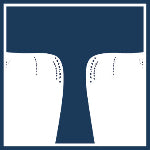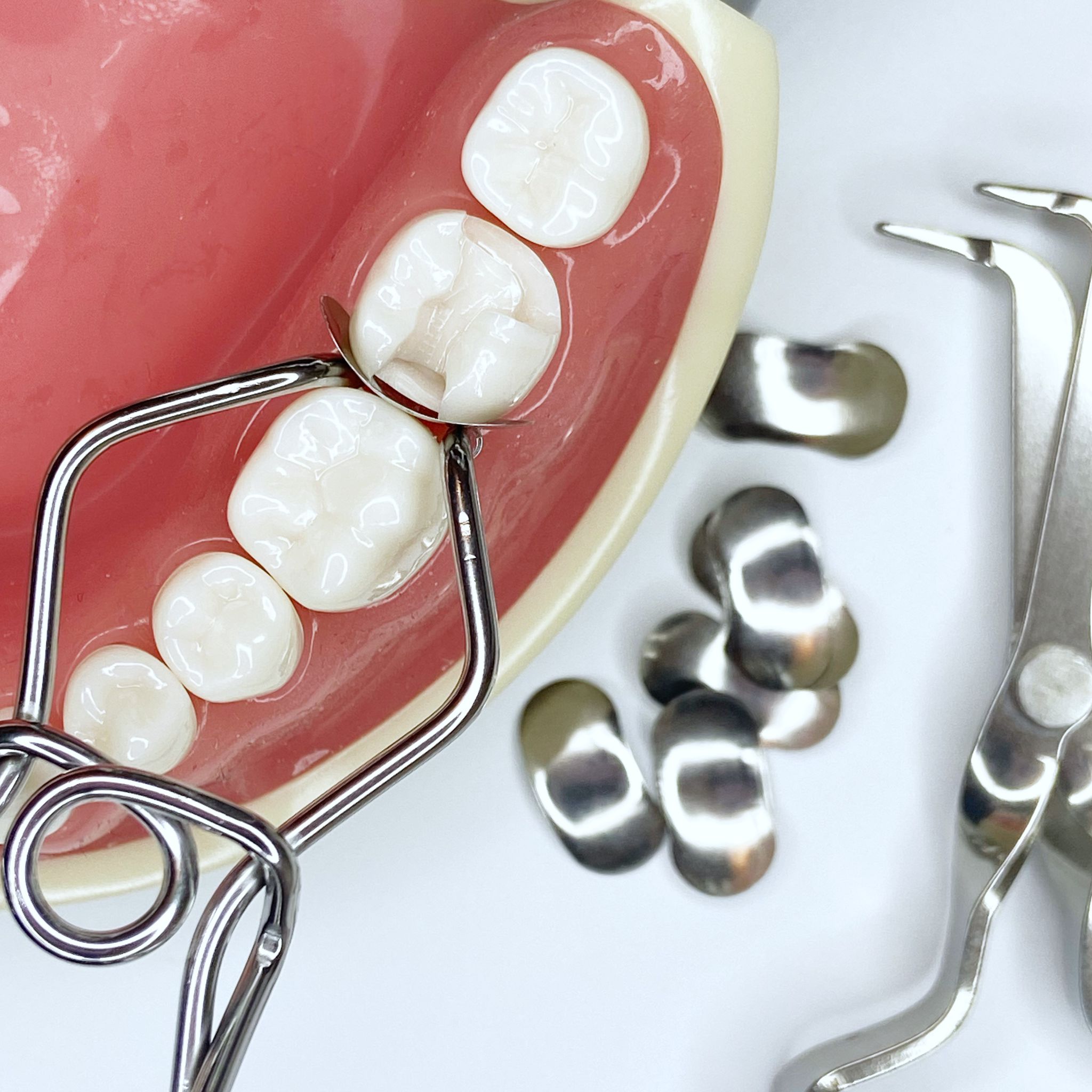Sectional metal matrices are immensely useful when class II restorations are preformed. They are the preferred appliance in such procedures as they provide the strongest contact point in the posterior dental sector. Obtaining said secure and anatomical proximal contact area is crucial because it prevents food impaction and periodontal disease which in turn, helps maintain papillary health as well as prevent dental migration and decay. In order to ensure an optimal result, the sectional metal matrices are to be implemented in a particular arrangement. While the specific techniques may vary, the overall steps are as follows:
- Operative field preparation
During this step, a rubber dam is used to obtain access and visibility in what should be a wide isolation of the operative field. This can be achieved through placing the clamp as far back as possible in the molars and at least two teeth distally to the tooth that is to be restored in premolars.
- Pre- wedging
This is a recommended technique that enables a tight proximal contact point. It provides a larger separation than the matrix thickness which guarantees its adequate placement. For this reason, a wide wooden wedge is recommended. It can also help avoid the production of undesirable concavities.
- Cavity separation
In this step, a margin trimmer/ cylindrical burr is used to eliminate the proximal cavity floor since the removal of carious tissue can make it unsupported.
- Matrix placement
Finally, it is now time to place the matrix. In this step, it’s important to use minimal pressure and situate the matrix so that it exceeds the gingival margin of the preparation and isn’t directly on the cavity floor.
- Polishing phase
In this last step, the completed restoration must be polished and then checked with dental floss.
The sectional metal matrices play a huge role in the success of class II restorations. Hence, it’s incredibly important for dentists to have the most effective ones. Which is why we offer Tor VM sectional metal matrices that come in refill packs of 50 with both 30 and 50 micron, hard and soft options. These thicknesses are ideal as they are stiff and therefore resistant to deformation (which is one of the biggest challenges when working with sectional metal matrices). They also require less separation force to obtain a tight contact point.
In short, we believe our sectional metal matrices would aid you most, especially when paired with a strong ring/ separator system.
What matrix THICKNESS and HARDNESS to use?
This is one of the most common questions we get asked. When should you use 35 or 50 microns Tor VM matrix bands? Hard or soft?
The first thing to say is that this is mainly a question of personal preference, and we think it’s great that Tor VM give dental professionals the choice.
When using sectional metal matrix bands there are two main considerations:
1) Getting a tight contact point
2) Getting an anatomical contact profile
The thinner the band the easier it is to achieve the separation required to get a good contact point!
Although…
there is a trade off as if the band is too thin and weak (relative to the separation force applied) then the band will deform and this will lose the desired contact profile. The whole point of sectional metal matrix bands is to help you achieve an anatomical, curved, proximal contour. Yet with so many of the systems on the market, the bands are made from a soft metal. This means that when the strong ring is placed around the band it deforms, flattens off and sometimes opens up at the cervical margin. The stronger the ring the bigger the risk... just watch closely what happens when you place your separation ring and sometimes you will see the flattening and deformation.
Try all 4 types in small, medium or large sizes

